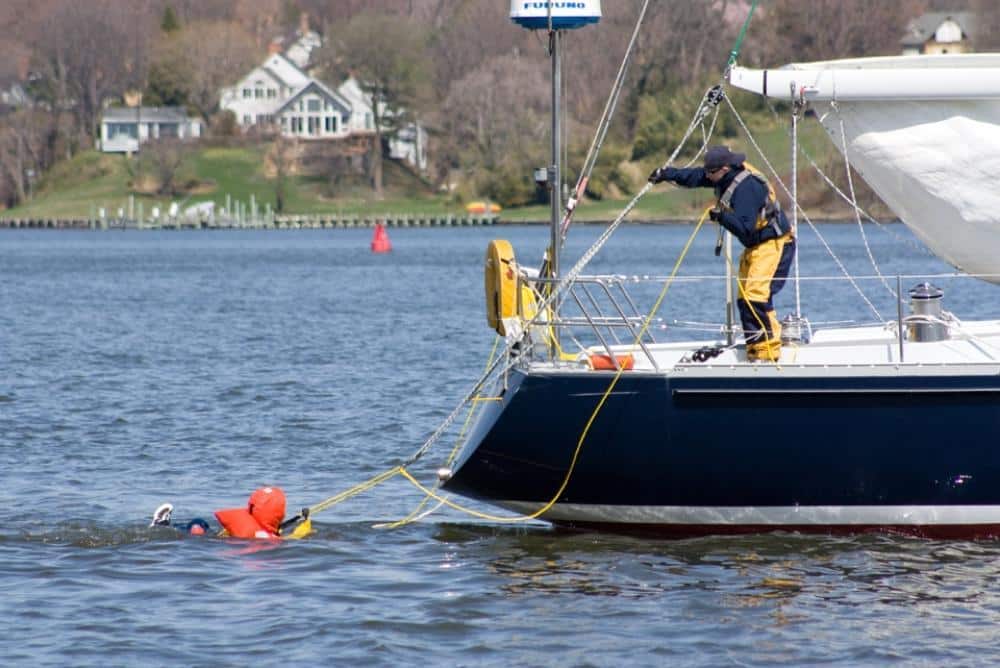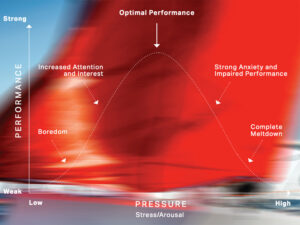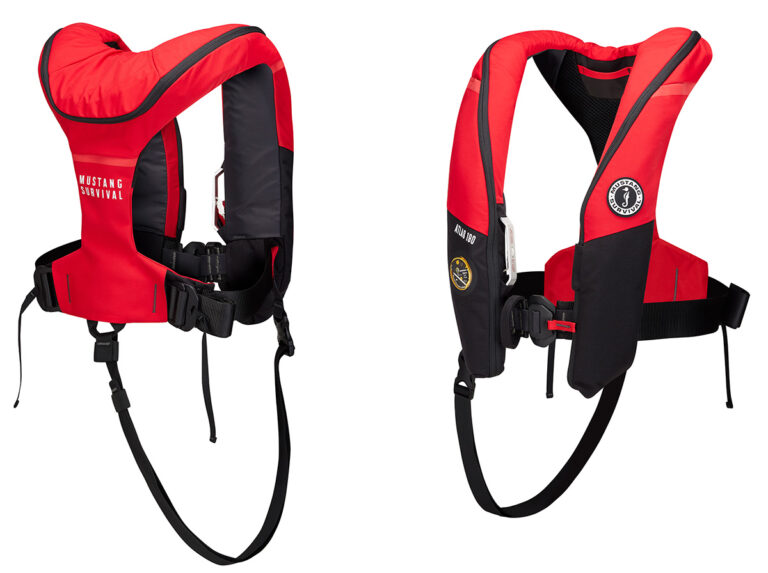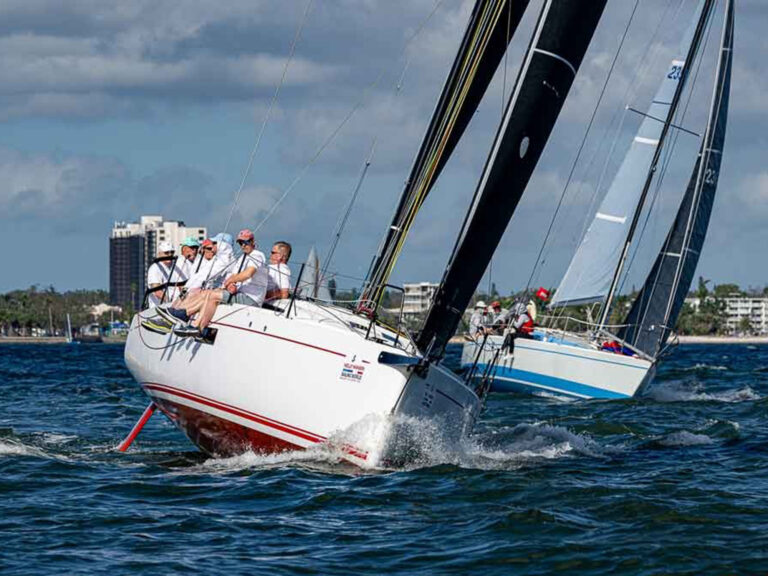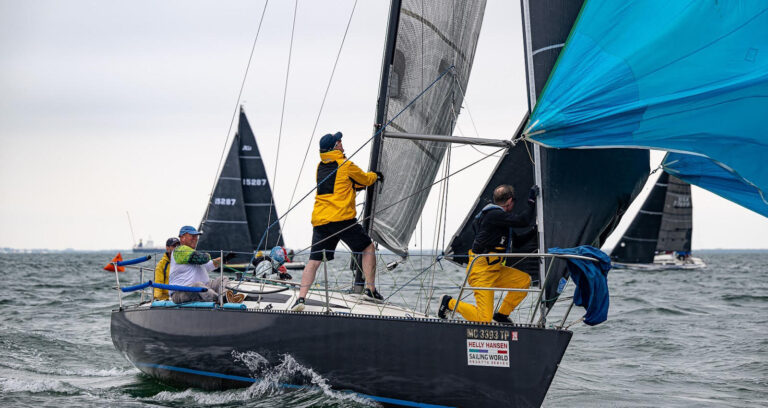We all know that things can go very wrong at sea, but do you know what to do when bad goes to worse? The US Sailing-sanctioned Safety at Sea Seminars are designed to address safety concerns from crew-overboard situations to gear and even seasickness medication. The seminars are typically held by a yacht club as part of preparation for an offshore race, and the one that I attended last spring was designed for participants of the summer’s Bermuda Race and Marblehead-Halifax Race.
Although I’m not going to be racing in either of these events, I found a great deal of good information and best practices that carry over into my more cruising-focused sailing plans including offshore weather, ditch bags, boat preparedness, life rafts (they inflated one on stage), and the all-important topic of seasickness.
It would be easy to walk out of the SAS questioning your choice to ever go on the water again, but one has to realize that the seminar talks about subjects that most of us prefer to ignore in our day to day life – and it can get scary on the ocean.
As John Rousmaniere, the moderator, commented, the SAS might be better named Seamanship at Sea. The talent on stage was breathtaking – some of the sailors literally have hundreds of thousands of miles under their keels—and clearly they’ve learned a few things along the way.
The focus of the SAS is preparedness. Along with preparing your boat for the worst, the speakers also cover how to prepare your boat and crew for the everyday. Some takeaways for me include: • Adding a quick release shackle to our harnesses at the near end of the tether • Checking over my steering gear and what to do for emergency steering • What the different seasickness drugs do and where to get them • A better understanding of weather and better tools for staying out of the bad stuff • What to expect when the weather really goes south if you are stuck out there, how to prepare the boat and storm gear and when to get into a life raft as well as some extra gear for survival situations
I very much enjoyed veteran ocean racer, delivery skipper, and weather guru Bill Biewenga’s presentation. Over the course of an hour he had us team up with someone next to us and walk through a hypothetical escalating situation aboard our own vessels. We covered handling the crew, changing weather conditions, sail deployment, and steering failure. As one of the sailors commented during the discussion “I would’ve just turned back.” I found this to be an excellent point.
The discussion of flares and emergency equipment was also enlightening. Bottom line with flares? You get what you pay for. The SOLAS flares are expensive, but they burn brighter and last longer. I’ll also be adding a handheld VHF to the ditch bag, along with an extra battery or possibly a solar charger.
At the end of the day, although there are a number of items that I will address as a result of attending before heading offshore, I felt that my Reliance 44 ketch, Lyra, came through very well.
So, is a Safety At Sea Seminar something that cruisers should attend? Yes, I think it that any person planning to sail long distances will take away valuable information and best practices that will at the least make their experience more comfortable… and could very well get them home in one piece if the worst happens.
For a list of upcoming Safety at Sea Seminars, visit http://offshore.ussailing.org/SAS/Seminars/SAS_Calendar.htm
Green Brett is a USCG-licesned captain and owner of On Watch Sailing charters in Newport, Rhode Island.
